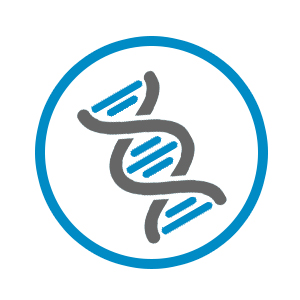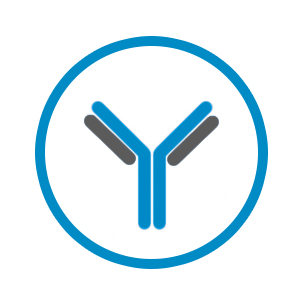Free Consultation Service - Protein Expression and Purification

Safety & Security:
Your project and contact information will be kept confidential.
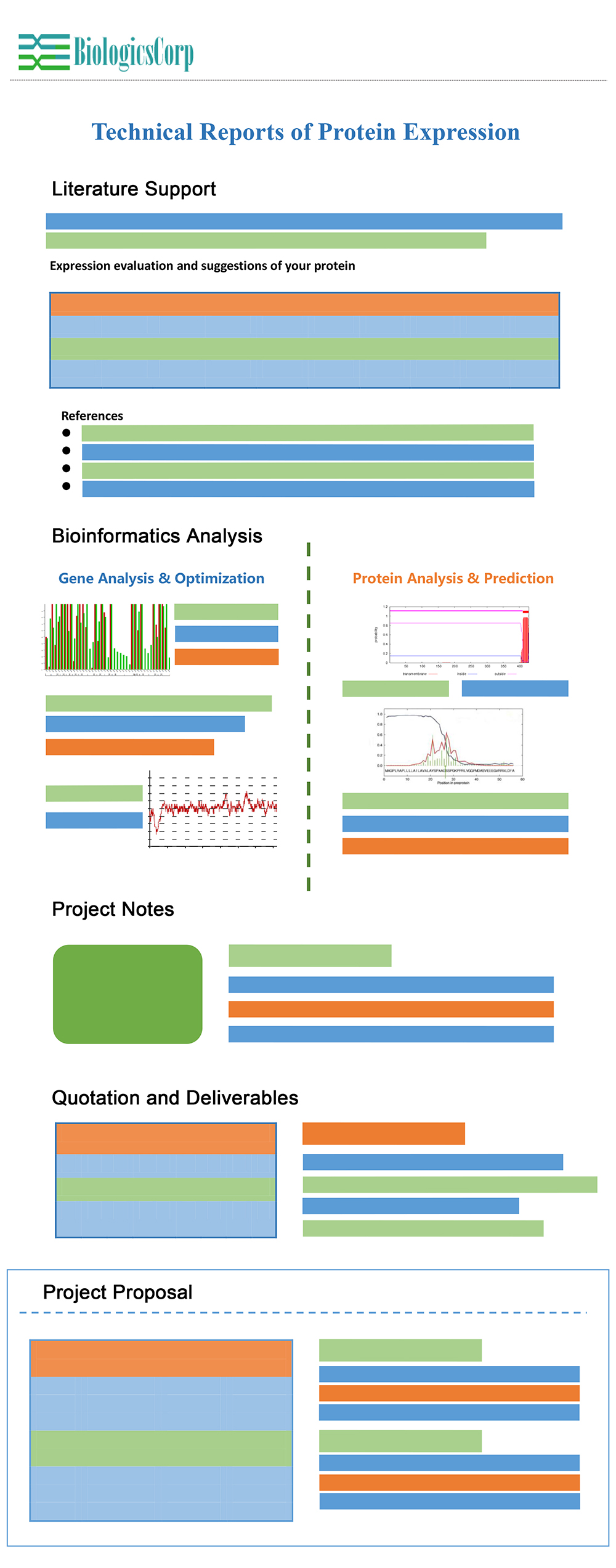
What you will GET
FREE evaluation of gene expression, experiment planning and design, and protein production strategy tailored to the properties and downstream applications of your target protein.
![]()
1. Literature support - You will receive a collection of literature about your protein of interest.
![]()
2. Bioinformatics analysis - We will perform a comprehensive analysis of the target protein sequence such as CAI, GC content, signal peptide, TMD, PPI, and protein structure.
![]()
3. Project notes - Matters needing attention in protein production process relevant to the downstream applications of your target protein will be reported.
![]()
4. Project proposal - A detailed protein production proposal for your target protein will be designed.
![]()
Our free consultation service will give you a full picture of your project. You will get insights on whether to optimize the codon of your gene, which expression system is most suitable for your needs, and methods to improve the success rate.
1.Literature Support
We will provide a review of literature related to your target protein. Our summary will include references of successful expression cases of the target protein, as well as protein expression systems and expression conditions.
The expression system plays an important role in the development of recombinant proteins. While we provide help with finding the most suitable system for your protein, if your protein of interest or its homologous protein has already been published, it is advisable to try the same expression system and use what has worked in the past. This is usually a good starting point for your project.
In addition to expression systems, we will summarize expression vectors, strains and expression conditions that have been used for the expression of your target protein. Other useful information such as whether the expressed protein has any activity will also be summarized.
A good review of literature is crucial to successful expression of your protein. Our summary will save you time and greatly improve the success rate of your research project.
2.Bioinformatics Analysis
Gene Analysis and Optimization
Your target gene will be analyzed using our codon optimization software which integrates several algorithms covering aspects such as gene synthesis, expression system, vector context, transcription, and translation.
Codon optimization encompasses several important features such as codon usage bias, GC content, mRNA structure, repeated sequences, restriction enzymes sites, and non-coding region.
- Codon usage bias refers to differences in the frequency of occurrence of synonymous codons in coding DNA. A codon adaptation index (CAI, a widespread technique for codon usage bias analysis) will be calculated using our online calculator. Generally, a low CAI level means codon optimization needed.
- The GC pair is bound by three hydrogen bonds contributing to improved DNA stability. For certain gene sequences, the GC content can be accurately calculated by our online GC content calculator.
- mRNA structure plays a number of critical roles in the translation regulation process. Our codon optimization software opens intra-molecularly formed stems and subsequently increases protein expression yield by extending mRNA stability.
- Repeated sequences are patterns of nucleic acids that occur in multiple copies throughout the genome. Its redundancy causes difficulty in gene synthesis and protein expression. Reverse complement repeats have a significant impact on mRNA secondary structure as well.
- Restriction enzyme sites in the target sequence should be replaced by synonymous nucleotides in the process of codon optimization to eliminate restriction enzyme cleavage sites and facilitate DNA cloning operations.
- Non-coding DNA elements are also considered as important parts of codon optimization. Choosing the optimal promoter and terminator combination may lead to high expression level of your proteins of interest.
Protein Analysis and Prediction
Signal peptides (SP), transmembrane domains (TMD) and other factors that might affect protein expression will be predicted.
- In vivo, amino acids comprising the signal peptide are cleaved during the protein maturation process. For various purposes it is desirable to identify signal peptides and their corresponding cleavage sites. The presence of signal peptides in a protein sequence always leads to a loss in activity of the protein in bacterial expression systems. However, signal peptides can be considered as an additional resource in the context of the function of secretory and membrane proteins.
- The transmembrane domain is very hydrophobic and usually has no biological function. The hydrophobic TMD easily binds to the key metabolic elements (such as SRP) in E.coli, usually leading to no protein expression. Most especially, the hydrophobic TMD may lead to very poor solubility and stability of the protein.
- The homology of the target protein will be analyzed and further predictions such as interactions and structure of the target protein will be performed.
- Your protein sequence will also be analyzed to determine the theoretical protein MW, predicted PI, and amino acid composition, etc.
The aforementioned analysis will give you a better understanding of your project. In addition, you will receive professional suggestions from our scientists, further making your protein production project stress free.
3.Project Notes
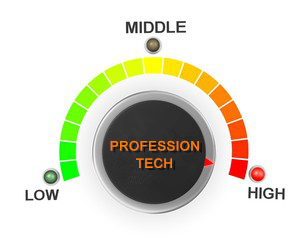
The downstream application directly affects the protein preparation standard. In light of the end use of the protein, many aspects should be considered in the process of protein production:
- Is it necessary to remove endotoxins from proteins?
Endotoxins are part of the outer membrane of the cell wall of Gram-negative bacteria which can cause a number of side effects to host organism such as endotoxin shock, tissue injury, and even death. When protein samples are to be transfected into cells or injected into an animal host, it is often necessary to remove bacterial endotoxins from final product.
- Should I select tag fusion expression?
Protein fusion tags can improve protein expression yields and facilitate detection and purification of
recombinant proteins. But if the end application is likely to be sensitive to the presence of the tag (e.g., NMR, crystallography, therapeutics), then it is preferable to avoid the tag.
- Is it necessary to cleave the tag off the fusion protein?
Removal of carrier proteins and affinity tags is often necessary when the presence of fusion tag affects the structure or biological function of the protein of interest.
- Is it necessary to remove RNase from proteins?
RNase is a type of nuclease that catalyzes the degradation of RNA into smaller components. In addition to cellular RNases that are released in the process of protein production, several kinds of RNases are constitutively present in the environment. Certain RNases can be extremely hard to inactivate.You will need RNase removal from your protein sample if its downstream application involves assays with RNA.
The above mentioned points will be included in the report of matters needing attention in the process of protein production based on the downstream application of your protein, and a strategy will then be designed for you.
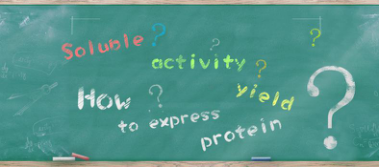
4.Project Proposal
We will design your protein production plan customized to your research needs and provide you with detailed protein production proposal, which includes protein production workflow, turnaround time, accurate quotation and deliverables, etc.
5.Quotation and Deliverables
We will provide you with our quotation and deliverables after evaluation of you project.
Cell-based recombinant protein expression and purification systems are the most classic and most widely used protein expression systems. However, you may encounter many stumbling blocks when attempting to express heterologous proteins. The following troubleshooting of protein expression and purification may provide some reference for your experiment.
Troubleshooting of Protein Expression
We provide guidelines for identifying possible sources of problems in protein expression process and propose common solutions.
1) No or low expression
| Reasons | Solutions |
|---|---|
| Codon bias Protein toxicity |
Optimize codon frequency in cDNA to be consistent with codon usage of host Use codon bias-adjusted strains Add glucose when using expression vectors containing lac-based promoters Use defined media with glucose as source of carbon Use pLysS/pLysE bearing strains in T7-based systems Use promoters with tighter regulation Lower plasmid copy number |
2)Protein insolubility
| Reasons | Solutions |
|---|---|
| Incorrect disulfide bond formation Incorrect folding |
Direct protein to periplasm Use E.coli strains with oxidative cytoplasmic environment Co-express with molecular chaperones Supplement media with chemicals Remove inducer and add fresh media Lower protein synthesis rate |
3)Protein inactivity
| Reasons | Solutions |
|---|---|
| Low solubility of the protein Poor post translational modification Incomplete folding |
Fuse desired protein to a solubility enhancer (fusion partners) Change expression system Lower temperature Monitor disulfide bond formation and allow further folding in vitro |
Troubleshooting of Protein Purification
| Problems | Possible causes | Recommendations |
|---|---|---|
| Target protein not bound to the column | Protein degradation or tag loss |
|
| Tag inaccessible (unexposed) |
|
|
| Unoptimized binding conditions |
|
|
| Poor target protein elution | Too mild elution conditions |
|
| Too strong interaction with the column |
|
|
| Precipitated target protein |
|
|
| Presence of non-specific hydrophobic or other interactions |
|
|
| High amount of co-eluted contaminants | Unoptimized binding conditions |
|
| High concentrated or viscous sample |
|
|
| Insufficient wash |
|
With a group of highly experienced and dedicated scientists working in various state-of-the-art production platforms, BIC (BiologicsCorp) has successfully produced thousands of recombinant proteins using bacterial, mammalian cells, and yeast expression systems. We have delivered purified proteins to world wide customers with a success rate of over 95%.
BIC provides high-quality recombinant protein expression services at very competitive rates. Our technical support staff will provide you with the best solution for your project based on the characteristics and downstream applications of your target protein. Through process optimization, our highly experienced scientists will help you improve the expression level of your target soluble protein and achieve the maximum biological activity.
Protein Expression Service Highlights
- Guaranteed quantity and purity: Get your desired quantity and purity or your money back.
- Flexible solutions: Multiple approaches for assured success.
- Guaranteed soluble proteins: You only get billed if solubility is achieved.
- Maximum activity: We prioritize supernatant proteins.
| Protein Expression Systems | Service Category | Service Features |
|---|---|---|
Bacterial Expression System |
Guaranteed Protein Expression Service |
|
| Fermentation Service |
|
|
| SupernateIN™ Protein Expression Service |
|
|
| Tag-free Protein Production Service |
|
|
| Endotoxin Removal Service |
|
|
| High-throughput Protein Production Service |
|
|
| RNase Removal Service |
|
|
Mammalian Expression System |
Transient Transfection |
|
| Stable Cell Line Establishment |
|
|
| Recombinant Antibody Production |
|
|
Yeast Expression System |
Yeast Protein Expression Service |
|
Contact Us


